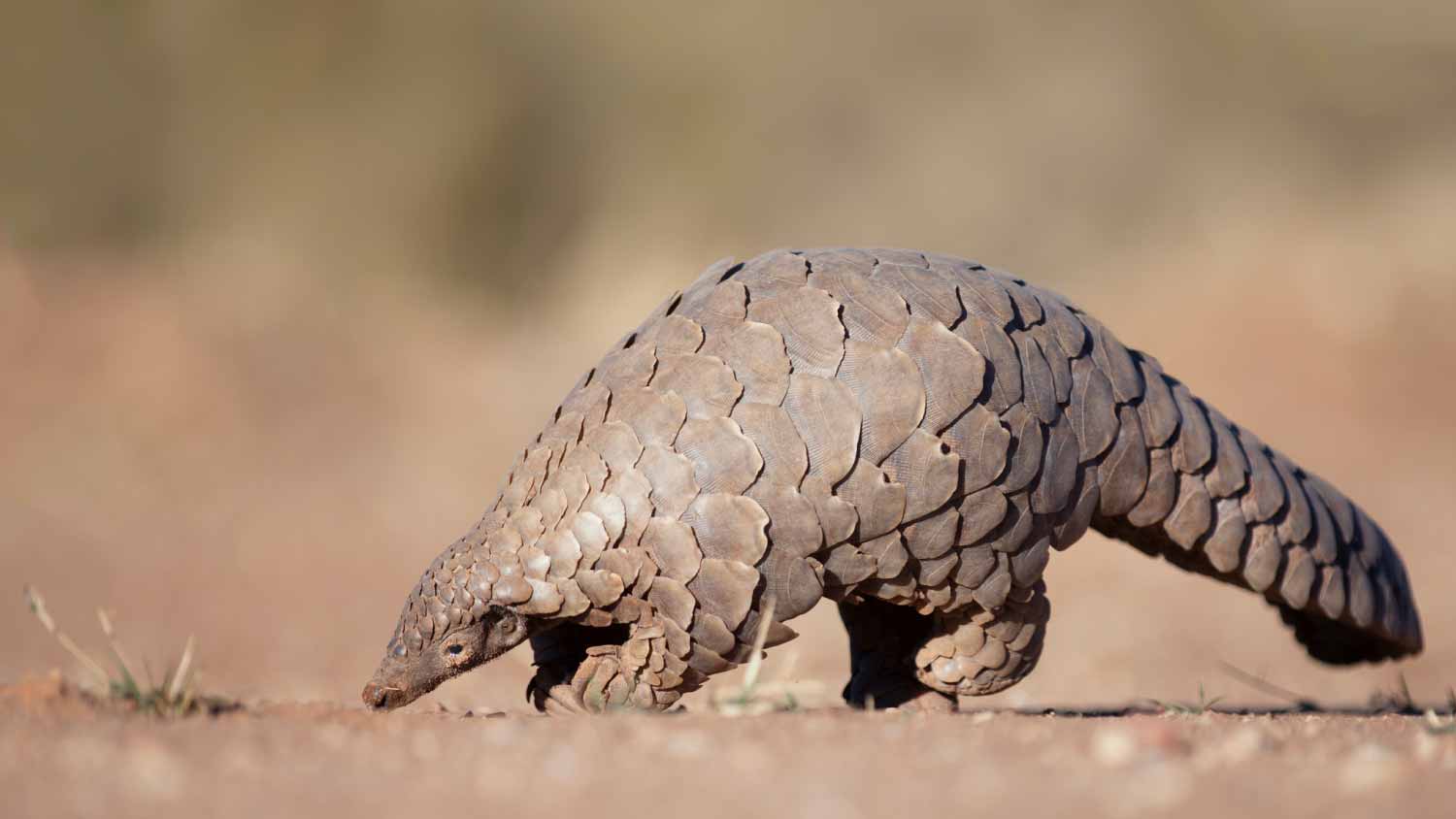
Your skunk removal cost will depend on several factors, including type, location, and more. Our guide will cover everything you need to know about skunk removal costs.
Uncover the secrets of these armor-clad critters


Pangolins and armadillos are distinct creatures from different backgrounds and regions.
The nine-banded armadillo is a familiar sight in the southeastern and south-central states.
Both animals dig, burrow, and have a taste for insects.
Armadillos can carry diseases and pose a health risk to humans.
Pangolins and armadillos seem like first cousins thanks to their prehistoric, armor-like coverings. However, these animals hail from different ancestral roots and live on different continents. Here's what homeowners need to know when comparing the pangolin versus armadillo.
Pangolins and armadillos are entirely different creatures with unique evolutionary backgrounds. Pangolins are surprisingly related to the Carnivora group, which includes cats, dogs, and bears. In contrast, armadillos share their lineage with anteaters and sloths.
Fun fact: Pangolins are the only mammal entirely covered in scales. These unique animals are native to Africa and Asia and thrive in diverse environments such as forests, savannas, and grasslands.
Armadillos, on the other hand, are native to the Americas. With about 20 species, they range from the southern United States to Argentina. The nine-banded armadillo is the only variety found in the U.S., particularly in the southeastern and south-central states like Florida and Texas. They primarily inhabit warm, temperate, and tropical regions, often creating burrows on properties similar to moles and voles.
| Aspect | Pangolins | Armadillos |
|---|---|---|
| Habitat | Africa, Asia; forests | Americas; warm regions |
| Size | 12 to 60 inches | 25 to 42 inches |
| Burrows | Deep, multi-chambered | Up to 7 ft deep, 20 ft long |
| Markers | Large keratin scales | Tough bony plates |
| Nocturnal | Yes | Mostly |
| Behavior | Digs for ants/termites | Burrows for insects |
| Disease | No known diseases | Leprosy and Chagas |
| Color | Brown, olive, golden | Gray, brown |

Differences in physical appearance make pangolins and armadillos easy to distinguish despite their similar armored exteriors.
Depending on the species, pangolins can be 12 inches to 5 feet long and weigh 4 to 73 pounds.
Armadillos also have a broad size range among their species. The pink fairy armadillo can be as small as 5 to 6 inches long, while a giant armadillo grows to 5 feet long. The nine-banded armadillo measures 25 to 42 inches long, including the tail, and can weigh between 6 and 14 pounds.
Pangolins sport a color palette ranging from brown to olive to golden, perfectly blending into the lush hues of their forest habitats. Armadillos don shades of gray and brown, allowing them to seamlessly blend into the earthy landscapes of the southern United States.
While both critters have long tails and pointed snouts, the pangolin's heavily scaled tail provides protection against threats, a function not shared by the armadillo, which sports a shorter tail. Armadillos are more cylindrical, with rounded heads and pointy ears.
Armadillos and pangolins also have different protective armor. Pangolins are covered in large, overlapping scales made of keratin. In contrast, armadillos have bony plates covered with tough skin, known as osteoderms, which are segmented for flexibility and cover the back, head, legs, and tail.
Pangolins are relatively benign when it comes to damage to wild habitats. They primarily dig small holes in search of ants and termites, which can benefit pest control. Their digging is minimal and unlikely to cause significant harm. However, they can be quite a nuisance in residential areas. They dig very deep burrows with many chambers to sleep in. They can also claw through concrete, damaging homes.
Armadillos are notorious for their destructive behaviors. They dig extensive burrows and tunnels, and their search for insects, grubs, and other small critters often leads to uprooted plants and unsightly holes across a yard. This burrowing behavior can be particularly troublesome for homeowners, as it can disrupt the aesthetic and structural integrity of gardens and lawns.
While pangolins are relatively harmless in terms of disease transmission to humans, armadillos are notorious for spreading certain diseases.
Most notably, they can carry the bacteria responsible for leprosy and the parasite that causes Chagas disease. This parasite is often transmitted through contact with infected triatomine bugs in armadillo burrows.
When dealing with armadillo-caused property issues, homeowners should avoid health hazards by hiring a local wildlife removal service. The cost to remove armadillos averages $275.
From average costs to expert advice, get all the answers you need to get your job done.

Your skunk removal cost will depend on several factors, including type, location, and more. Our guide will cover everything you need to know about skunk removal costs.

When budgeting for possum removal costs, consider number of animals, location, method of removal, and whether you do it yourself or hire a professional.

The cost to remove a groundhog can vary depending on where you live and whether you do it yourself or hire a professional. We’ll help you figure out the true cost of groundhog removal, along with strategies for humane trapping and release.

Hawks are expert overhead hunters. To protect your pets and the little birds visiting your backyard, learn how to keep hawks away with these humane strategies.

Learning about the differences between moles versus gophers can help you target your pest management strategy to prevent lawn or foundation damage.

If there’s a snake in your house or yard, who should you call for snake removal? Though expensive, a wildlife removal pro will ensure the job is done right.